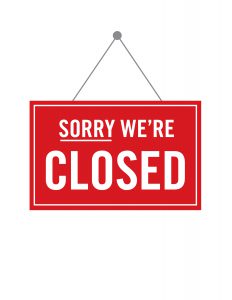By Craig Perrier
Talking with colleagues and educators in other states about their plans for teaching and learning during COVID-19 closures has resulted in some common sentiments. Among the most frequent comments are these, “this came on so quickly”, “the situation is fluid”, “will students be graded”, and “when will schools re-open?” Responses, of course, vary greatly and ultimately “it depends” may be the most popular at this stage of the pandemic. But we can speculate about what the significant influencers are and predict the course of action schools will take. I lean to these factors: the size of the school system, community – school relationships, level of technology integration, and quality of leadership.
There is, however, another message in the mix that is a north star for teaching during this period. It is a simple, clarifying, and empowering statement, “Let’s focus on what we can do, not what we can’t do.” This is, in essence, a call to collective, targeted action. It suggests that we go forward with perspective, resiliency, and empathy. The message is, in many ways, what we ask out students to do.
We can correlate this message to one of the most used and influential concepts in education this last decade, “mindset.” So, what is mindset? Dr. Carol Dweck, author of the 2007 work Mindset: The New Psychology of Success, explains, “Our mindsets exist on a continuum from fixed to growth, and although we’d like to always have a growth mindset, the reality is that we can only be on a journey to a growth mindset. The goal is to recognize fixed mindset elements in ourselves and then reflect on feedback and strategies for how to improve.”
As educators we strive to exemplify what it means to have a have a growth mindset and instill that disposition in our students. Some of the qualities associated with a growth mindset are:
- Curiosity
- Persistence
- Reflectiveness
- Awareness
- Leaving your Comfort Zone
Additionally, individuals with growth mindsets believe that intelligence is not a fixed quantity and is highly contextualized. Therefore, the most valued types of assessments or ways for students to demonstrate their learning involve open ended and “real world” application of the learning.
Now is the perfect time to emphasize these traits with students! What’s more, they can be part of learning in any course, any grade level, and in a distance environment regardless if it is digital or paper-based. In turn, it will be imperative to establish a communication plan for students and possibly parents. Being present and available will matter. Fortunately there are a number of technology tools that support synchronous and asynchronous communication as well as neighborhood outreach options schools can utilize.
So, what is your mindset? In the spirit of the times where digital resource and educational technology companies are granting free access to the products and services, you can take a free “Mindset” self-assessment here https://blog.mindsetworks.com/what-s-my-mindset
Once you have this information, take a moment to reflect on how the remaining time this school year might be used. Let the qualities of a growth mindset guide your teaching, relationships, and communication around “what we can do, not what we can’t do.” I believe we will see innovative, inspiring, and memorable experiences in the following months.
